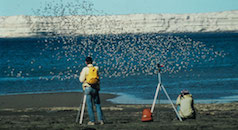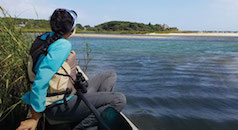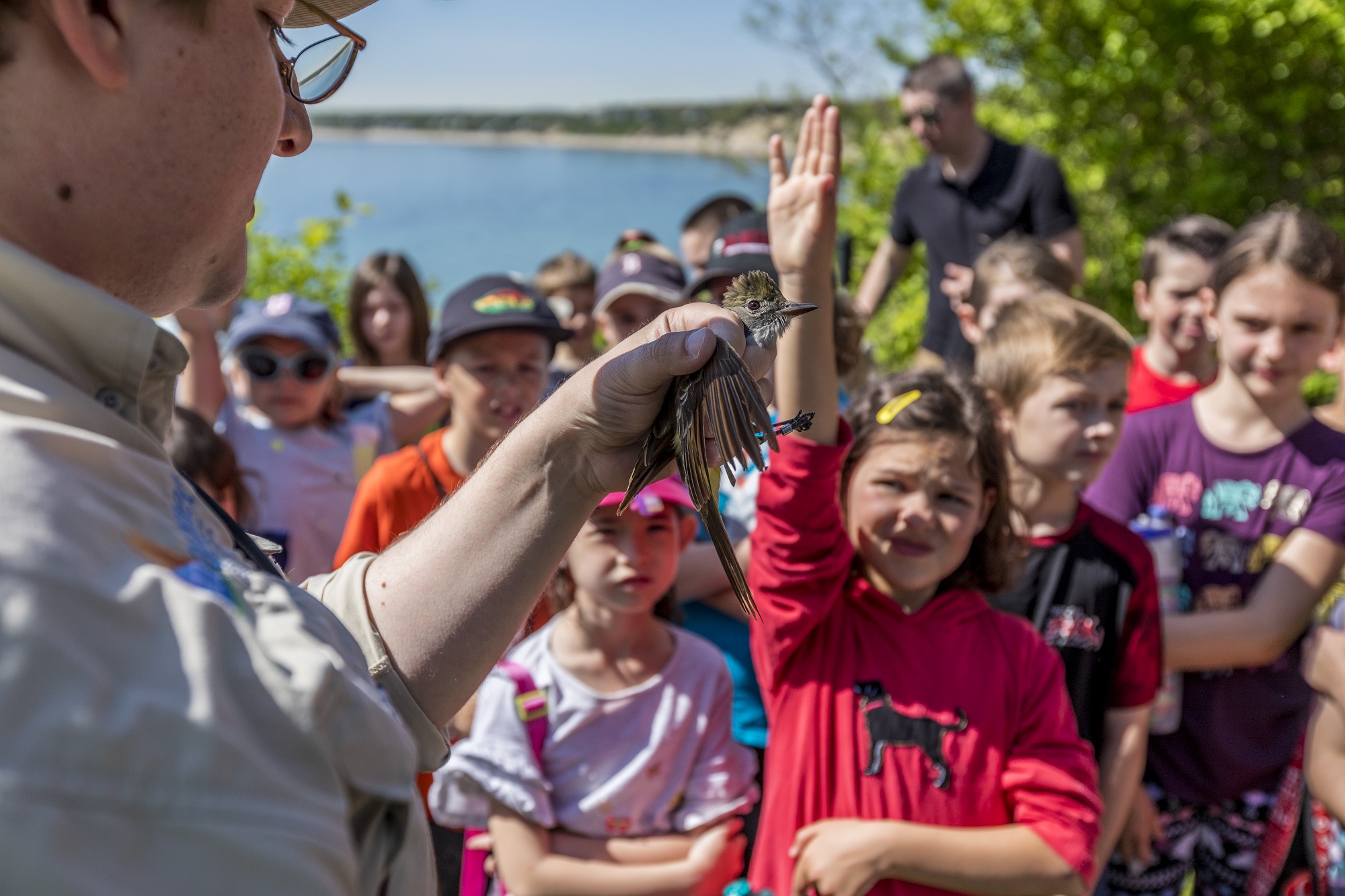Search Results

Home
test
New Paper uncovers migration mysteries of a threatened shorebird species
Manomet, USGS, GA Department of Natural Resources and Delaware Division of Fish and Wildlife complete multi-year research on the Red Knot PLYMOUTH, MA January 26, 2018 A new study published in the February 2018 Journal of Wildlife Management reveals the importance of the Georgia Coast as a key migratory stop-over for supporting large numbers of Red Knot (Calidris canutus rufa) on their southbound migration. This collaborative effort from members of Manomet, Inc., the USGS Patuxent Wildlife Research Center, Georgia Department of Natural Resources, and Delaware Division of Fish and Wildlife, also provides the first ever population estimates of rufa Red Knots wintering in the southeastern U.S., Caribbean, and northeastern Brazil. “This study emphasizes the importance of Georgia’s Altamaha River Delta...
Reflecting on Thanksgiving and the holiday season
The team here at Manomet hopes you had a very happy Thanksgiving! Nearly 400 years ago, the first Thanksgiving was celebrated just a short distance from our Plymouth headquarters and it set the tradition for all Thanksgivings to follow. Even in today's busy world, Thanksgiving is one celebration with a strong tradition of serving seasonal foods and where many pause to appreciate their meal and where it came from. While we're not certain if there was turkey on the first Thanksgiving table, other fowl and venison were likely served accompanied by fruits and vegetables that were gathered or harvested. Unlike most of our Thanksgiving feasts today, seafood played a big role in the meal, but there were no mashed potatoes...
Manomet’s Anne Hayden speaks at fifth IMBeR IMBIZO Conference
Last month, marine scientists from around the world converged on Woods Hole, Massachusetts, for an international conference hosted by the Woods Hole Oceanographic Institution. Anne Hayden, Program Manager in Manomet’s Sustainable Economies Program, received an invitation to present her work on fisheries in the Gulf of Maine. “I was surprised and flattered to be asked,” Hayden reported. The conference, Marine biosphere research for a sustainable ocean: Linking ecosystems, future states and resource management, was organized by Integrated Marine Biosphere Research, an international organization based in Bergen, Norway. Hayden was asked to address opportunities for improving the models used by fisheries managers to predict stock dynamics. According to Hayden, “such models often focus on biological factors affecting fish stocks...
Green crabs have invaded, and if you can’t beat ’em, eat ’em
This article was written by Christine Burns Rudalevige and originally published by the Portland Press Herald July 24, 2017. Staff photo by Derek Davis. See the original article here. When I started writing about sustainable seafood five years ago, my biggest fear was working on a story that involved a seaworthy vessel in a storm. Under those conditions, my not so seaworthy constitution would be exposed. I’d imagined more heaving of my lunch than honing of my reporting skills. That assignment has yet to materialize. But my squeamish stomach made an appearance two weeks ago in the face of a locally harvested, deep-fried, soft-shell green crab at Salt Pine Social in Bath. I’d chosen the smallest one on the plate. It was about...
A little fish with a big impact
By: Anne Hayden, Program Manager, Sustainable Economies Program More and more people are feeling the love for a little fish with a big impact, the alewife. The Downeast Fisheries Partnership (DFP), coordinated by Manomet’s Anne Hayden, is making the case for alewife restoration in eastern Maine’s rivers and streams. These fish are commercially harvested and a local delicacy, but they are also the base of river and coastal food webs and a key component of the Partnership’s focus on restoring cod, haddock, and other species. The spectacle of adult alewives surging upstream each spring draws fishermen and wildlife enthusiasts (as well as osprey and other predators), but it is the return of millions of juvenile alewives back downstream to...
Manomet Returns to the Arctic
By: Stephen Brown, Vice President of Shorebird Conservation Ready to go! Bird Camp Crew 2017, Back L to R: Chris Latty, Will Wiese, Alex Lamoreaux, Alan Kneidel. Front: Jessica Herzog, Shiloh Schulte, Metta McGarvey, Elyssa Watford. Photo credit: Alfredo Soto The Shorebird Recovery Project has been sending teams of scientists to some of the most remote areas of the North American Arctic for 17 years. This year, our shorebird science crew is working with the U.S. Fish and Wildlife Service at the Arctic National Wildlife Refuge to better understand what habitats are most important to shorebirds after they finish their breeding season. The project also includes four other partner organizations working at other sites across the North Slope. Our...
Community Engagement Kicks Off at a New WHSRN Site in Washington State, USA
Each year over 200,000 shorebirds make a stop at Willapa Bay in Washington State, the second largest estuary on the USA’s Pacific Coast. With nearly 50,000 acres of mudflats, shorebirds are able to rest and refuel on a buffet of invertebrates. They also forage, roost, and nest on the nearby sandy shores of Long Beach Peninsula. With salt marshes and pastures also contributing to habitat diversity, it’s no surprise that at least 43 species of wintering, migrating, and nesting shorebirds rely on the area, including Red Knot, Short-billed Dowitcher, Dunlin, Western Sandpiper, Marbled Godwit, and Western Snowy Plover. The wetlands at Willapa Bay - WHSRN's 97th site Willapa Bay and Long Beach Peninsula participated in a project led...
Meet our Spring 2017 Banders!
At long last, the week we’ve all been waiting for has arrived; the week where the staff at Manomet HQ collectively defrosts, steps out into the warm April sun, and waves hello to the freshly inaugurated spring bird banders! This season’s dynamic squad of four enthusiastic and impressively experienced women joined our family last weekend, hailing from all over the northeastern U.S. Starting April 17, they began their journey as—to quote Trevor Lloyd-Evans— the “indefatigable” staff to kick off the lab’s 51st year in operation. Running 50 mist nets sunrise to sunset Monday through Friday through mid-June, we have no doubt this spring’s team will operate our lab with boundless fervor and expertise. From left to right:...
Manomet and partners collaborate to pinpoint reasons behind mysterious Semipalmated Sandpiper decline
Geolocators used to identify migration routes and stopover sites in the life of each bird PLYMOUTH, MA April 5, 2017 – Understanding and managing migratory animal populations requires knowledge of all stages of their migration routes and their life cycle. Manomet, along with 18 partner organizations, embarked on the first large-scale analysis of migratory connectivity for Semipalmated Sandpipers among breeding, stopover, and nonbreeding sites. The results are contained in a new study published today by The Condor: Ornithological Applications. The Semipalmated Sandpiper (Calidris pusilla) is a small shorebird, most commonly seen on migration along the coastlines of the eastern United States. It was historically one of the most widespread and numerous shorebird species in the Western Hemisphere, breeding across the...



